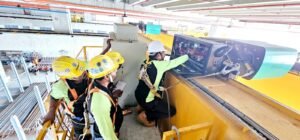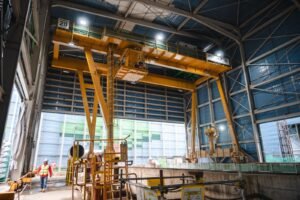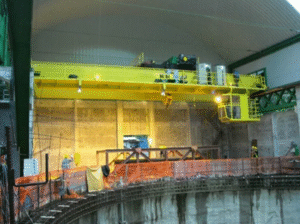Uncategorized
How Often Should You Schedule an Inspection of Lifting Equipment?
Periodic inspection of your lifting equipment will ensure you maintain a safe and compliant workplace. These thorough checks ensure your equipment works well and complies with the strict safety standards in Singapore. Preventing accidents before they occur keeps people safe and safeguards your valued investment.
This ensures that your operations carry on smoothly without exposing your business to unnecessary downtime, which impacts your business’s bottom line. When you adhere to your inspection schedule, you not only extend the capacity of equipment but also stay fully in local compliance. This will not only be economical but will also protect lives.
Understanding Lifting Equipment Inspection
Inspection of lifting equipment refers to examining all the elements used during light-load and heavy-load operations because they should be reliable and safe. Any gear, like cranes, wire ropes, chains, hooks, slings and shackles, must be inspected constantly. It involves a test of the load handling capacity and verifying adherence to existing regulations and standards. Whether your operations involve general-purpose cranes or special types, inspections protect against dangerous malfunctions. These consist of thorough checks that guarantee smooth operations and adequate fulfilment of safety requirements. Through the right inspections, issues are detected before they turn into a costly catastrophe.
How Often Should You Inspect Lifting Equipment?
Your inspection timing directly impacts safety and regulatory compliance in your operations. The frequency depends on usage patterns, load types, and working conditions you face daily. Follow this proven schedule for optimal results: conduct daily checks to catch immediate hazards quickly. Carry out a monthly test to ensure comprehensive checks are performed on all parts. Full annual certification to ensure complete regulatory and safety standards are met. Such a systematic management minimises operational risks, contributes to the reliability of equipment used in operation, and keeps all those involved in the operation safe.
Daily Checks – Quick Safety Assurance
Before operating any lifting equipment within your facility, you are required to perform daily checks. At first glance, rapid visual inspections detect all obvious signs of wear, damage, or control system challenges. Pay attention to hooks, chains, and control mechanisms during these checks.
Even though daily checks cannot substitute formal exams, the former offers the ultimate level of first-line safety protection. Once you identify problems, you should shut down operations, address the issue, and only resume once it’s resolved. Daily checking ensures that minor problems do not turn into serious situations that might cost a lot or result in inaction.
Monthly Examinations – Deeper Condition Checks
Monthly inspections require you to examine lifting equipment thoroughly for hidden mechanical or structural problems. During these sessions, look carefully for stress indicators on frames, joints, and all moving components. These checks must be performed by competent inspectors or members trained in regulations.
Monthly checks help identify problems in a timely manner, keep the safety of the equipment at a good level, and prevent any inconvenience in the functioning process. The examinations generate significant maintenance records to facilitate compliance in case of audits and certification in the regulated industries.
Annual Certification – Meeting Standards and Regulations
Lifting equipment should be annually certified, as it ensures legality and safety. These formal tests are done by qualified engineers or third-party assessors who have a rigorous testing process. They check all parts, conduct load tests, and ensure that they respond according to the Singapore safety standards and regulations. Ensuring annual certification shows your equipment is safe and in service and lawfully allowed to remain so. This helps safeguard your employees and, at the same time, uphold trust and dependability in running operations. Complying with these requirements demonstrates your commitment to safety and regulatory compliance.
Key Factors That Affect Your Inspection Schedule
Several critical factors determine how often you should inspect your lifting equipment for safety. Usage type and frequency directly impact inspection needs – equipment you operate more often requires frequent checking. Load capacity and strain levels matter significantly because heavy-duty operations create additional stress on mechanical components.
Inspection frequency is also understandably determined by environmental conditions to a great extent. Exposure to harsh weather, dust, moisture or chemicals hastens wear and damage to equipment components. Your inspection schedule should be set based on these factors.
What’s Included in a Lifting Equipment Inspection?
Comprehensive inspections include checks on the structural integrity, mechanical systems and all moving components of your equipment. The common inspection areas are wire ropes, chains, hooks, shackles, slings, and other parts of related gear. Engineers may conduct load testing and assess each device’s condition against established safety criteria.
Every system section receives review to verify optimal performance and safety compliance. Afterwards, detailed reports document findings, highlight maintenance needs, and support your compliance records. These comprehensive details ensure your lifting systems remain safe for ongoing operations.
Why Scheduling Inspections is Crucial for Safety and Operations
Properly laid out inspection programs keep your workforce safe and safeguard valuable investments in equipment. Frequent inspections avoid major accidents, increase the operational life of equipment, and enforce safety handling practices during the working process. Inspections support effective maintenance planning, improve daily operations, and reduce unexpected equipment breakdowns significantly. Your team can identify early warning signs of potential trouble with proper training. We work with experienced inspectors to perform targeted checks that protect your investment whilst keeping lifting equipment performing at peak efficiency levels.
Conclusion – Keeping Your Lifting Equipment Safe and Compliant
Regular inspection schedules keep your lifting gear operating safely and efficiently every day. Clear schedules based on established standards ensure equipment remains safe and fully compliant with regulations. Following certification requirements keeps you aligned with local laws whilst protecting your valuable team members.
In Singapore’s demanding work environments, inspections exceed basic rule compliance – they create safe, reliable operations everyone can trust. Consistent inspection practices protect lives, save money, and maintain the operational excellence your business requires for continued success.
Need expert help in inspecting your lifting equipment? Contact Jenmon today and explore our preventive programmes that will keep your investment in great shape!




